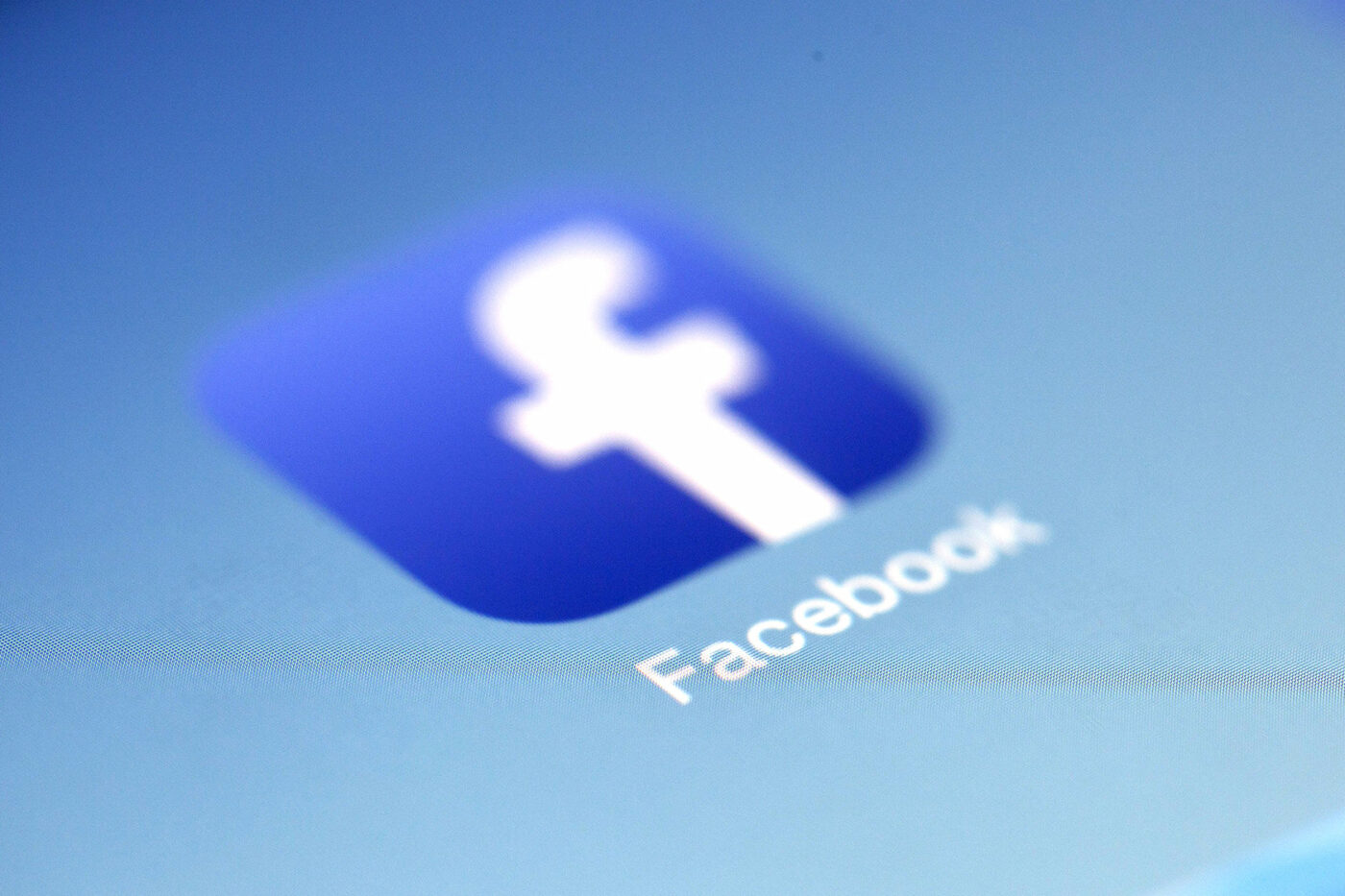Facebook is one of the longest running and most popular social networks. It was first introduced in 2004 as an exclusive social network for Harvard students and grads, and has since expanded into a platform that reaches consumers of all ages around the world. For brands and advertisers looking to engage with consumers and advertise to their target audiences, Facebook is often the first social platform they turn to.
Facebook has a huge consumer base of 1.79 billion active daily users. These consumers spend about an average of 20 minutes on the social network per day, and over 90% access it via a mobile device. People are using Facebook wherever and whenever they have time, not just when they are in front of a computer.
Facebook During COVID-19
In the midst of the COVID-19 pandemic, there has been a huge increase in time spent on social media across every age group. Facebook use during this time has grown more than its sister company, Instagram, as well as Twitter, Pinterest, Snapchat, Tik Tok, and LinkedIn. 47% of Gen Z and Millennials worldwide reported using Facebook more during the Coronavirus lockdown period in April 2020.
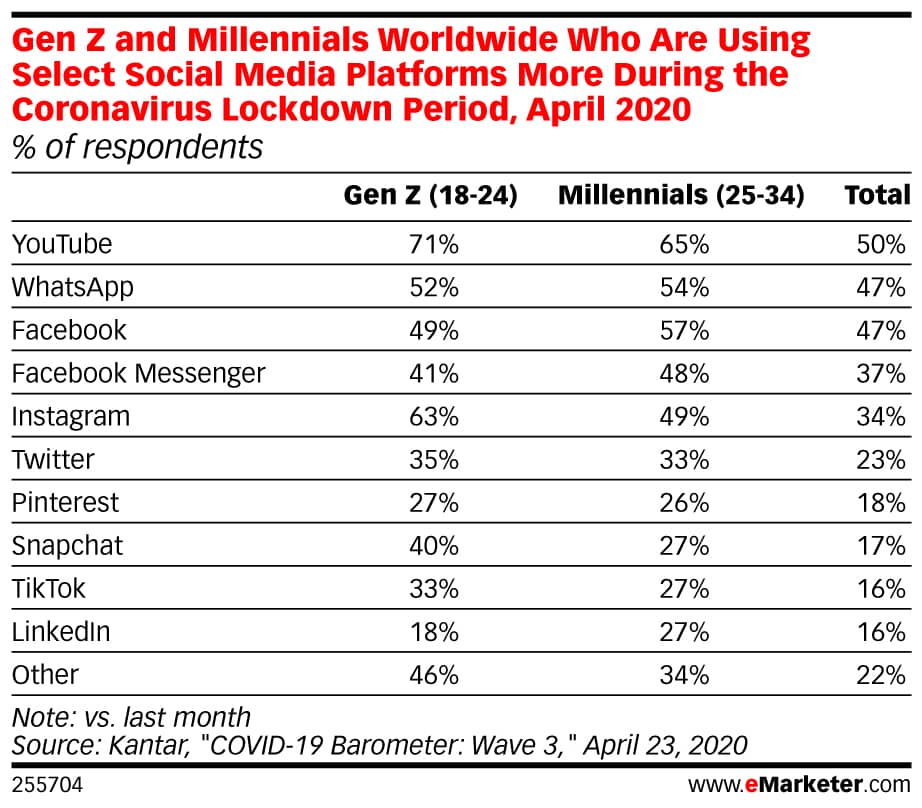
Facebook Demographics
Many people have had a Facebook account for years—not only using it as a way to keep in touch with friends and family—but to also receive and share news. 7 in 10 U.S. adults use Facebook, and the platform has 113.3 million users aged 13-17—larger than both Snapchat and Instagram (with 66.9 million and 52.9 million users within that age bracket respectively). The social networking site is used by people of all ages, as shown by the stats below:
- 51% of all consumers aged 13-17 use Facebook
- 81% of all consumers aged 18-29
- 78% of all consumers aged 30-49
- 65% of all consumers aged 50-64
- 41% of all consumers aged 65+
Source: Hootsuite
As Facebook’s user base continues to expand, the age of its consumers continues to increase—with the largest number of new users falling into the 65+ age bracket.
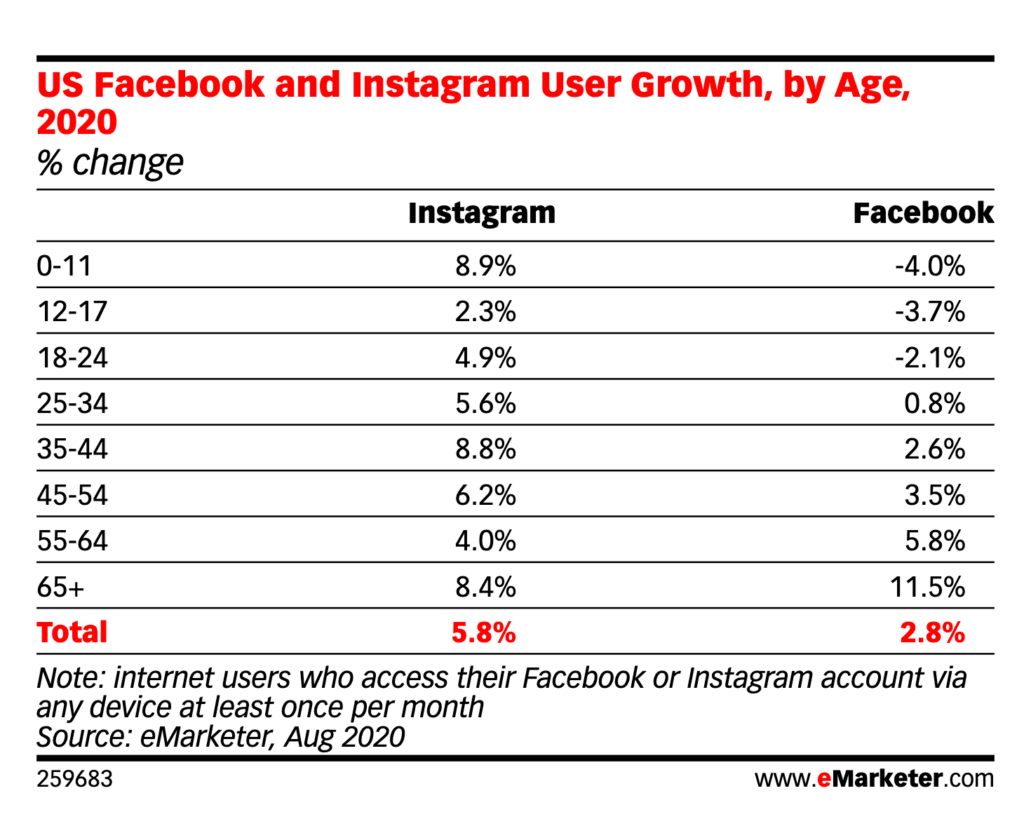
Advertising on Facebook
Given the broad reach of Facebook’s platform, from teenagers to boomers, advertisers have flocked to the platform as a relatively inexpensive way to get in front of their target audience. Today, Facebook has nearly 7 million active advertisers who use the Facebook ads manager platform.
Although the average user is on Facebook for approximately 20 minutes every day, more than half of Facebook’s users log in to the platform multiple times a day. A person might check Facebook in the morning, again at lunchtime, and later in the day after school or work. For advertisers, this means more opportunities to reach their target audience in different contexts and with more frequency.
Advertising on Facebook is relatively simple for any brand to take advantage of. The company has its own advertising management platform, Facebook for Business, that allows brands to set up their own account and manage their ads. Advertisers can use the platform to determine their ad parameters—including the target audience, flight dates, and daily/total spends per campaign.
In recent years, Facebook has come under fire for sharing audience data with third party companies, and was most recently the subject of a boycott within the US market, called #StopHateForProfit. In July, civil rights activists spoke out against Facebook’s handling of hate speech and misinformation, influencing more than 1000 companies to boycott the platform by discontinuing their advertising, while many other brands reduced their spending. Although this boycott seemed to have little effect on Facebook’s revenue, there are talks of expanding it into Europe later this year.
Targeting on Facebook
Facebook’s large user base presents great advertising opportunities for brands because there is a huge diverse group of people available for them to target—even more than were available just a few years ago. Because information such as age, gender, location, and interests can be added to each individual user’s profile, Facebook is able to use that information to target them with specific ads.
While some targeting options have been removed due to privacy concerns, the number of segments remaining is still very substantial and includes some that are unique to the platform, as shown below:
Standard Facebook Targeting Options
- Gender
- Age
- Interests
- Employers
- Schools
- Job Titles
- Fields of Study
- Language
- CRM / Custom Audiences
- Retargeting
- Fans
- Friends of Fans
- Behaviors
- Lookalike Modeling
Behavior targeting and lookalike modeling are two unique ways Facebook helps advertisers to reach their audiences.
Examples of behavior targeting include a segment for early tech adopters, or users who own an iPhone and use other apple products. These users are more likely to choose certain products based on their past purchases and their use of specific products. This type of behavioral targeting is valuable to advertisers in helping them to find and reach their desired audience.
Lookalike modeling gives the advertiser the ability to use first-party data in order to attract a new audience. This first-party data is owned by the advertiser and it helps them to determine the specific characteristics of their target audience, while finding additional consumers who are similar to that target. They also have the ability to target users who may have clicked on one of the brand’s ads, engaged with the brand’s Facebook page, or even partially completed a form without submitting it.
These robust targeting capabilities make Facebook an excellent platform for many different types of campaigns, including sale or product promotions and lead generation.
How Much Does Facebook Advertising Cost?
There are a variety of bidding models available to advertisers on Facebook, including cost-per-click (CPC), cost-per-like (CPL), cost-per-acquisition (CPA), or cost-per-thousand-impressions (CPM). While exact costs will vary by campaign, knowing the average for each of these bidding models helps these brands to understand what kind of conversion rates they need to set in order to reach tangible goals.
According to WebFX, Facebook’s average costs are as follows:
- CPC: $0.97
- CPL: $1.07
- CP: $5.47
- CPM: $7.19
These averages can vary based on a variety of factors, including length of the flight, the audience, ad placement, ad quality, etc. Using Facebook’s ad manager, advertisers have the ability to adjust how much they’d like to spend per day and which actions they are paying for, such as clicks, likes, or downloads.
Ad Placements on Facebook
There are several different ad types available for brands to utilize when they are looking to reach their target audience. From basic photo and video ads, to shoppable carousel ads with several different images linking back to a product page on the brand website, there is a good amount of creative variability that advertisers can use on the platform.
With limited space for text, it’s important for advertisers to recognize that the visuals drive the majority of the performance on Facebook (visuals account for about 80% of the activity). Text may not be the focal point for the ad, but it is important to utilize the limited space available for text in order to add context and detail to the visual element of the ad.
Below is a list of some of the ad formats brands can take advantage of on Facebook:
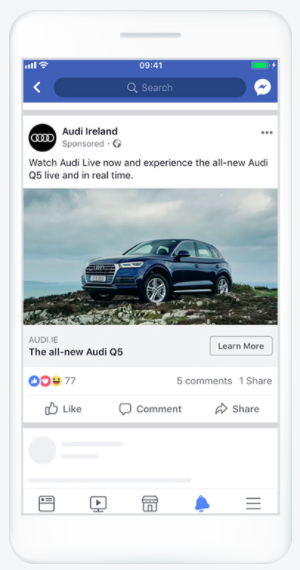
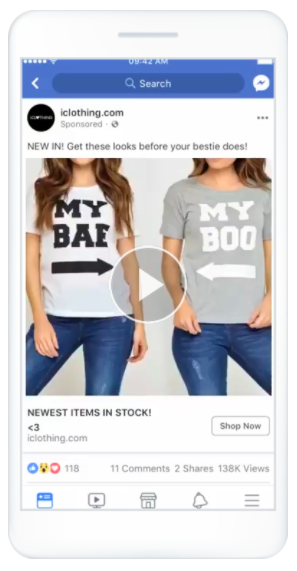
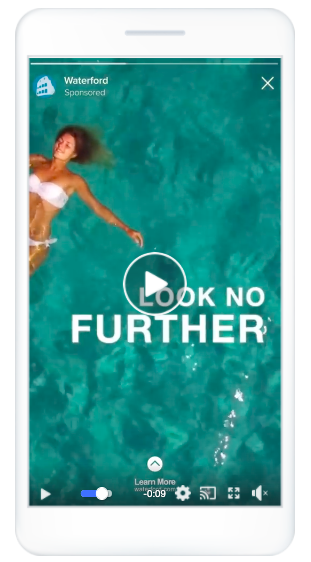
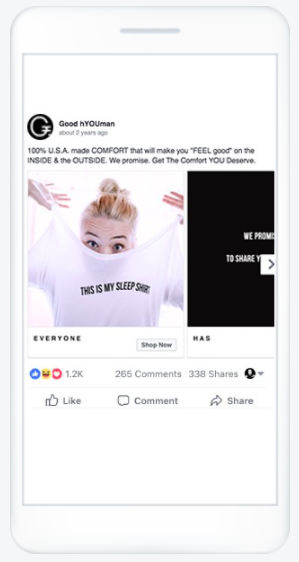
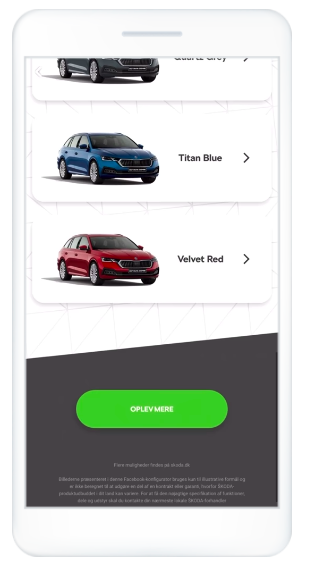
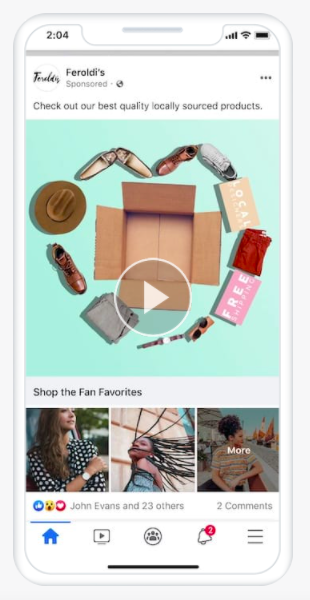
When choosing which ad format to use, it’s important to understand what the goal of your campaign is and how each ad type might help you to reach it. For example, if you’re interested in an awareness campaign, a photo or video ad might work best, where a carousel or slideshow might work better for an ecommerce campaign for a sale on specific items.
Learn More from our Facebook Experts
Whatever the goal of your paid social media campaign is, Facebook’s advertising platform offers many ways to reach it, with robust targeting capabilities and several ad formats to choose from.
Just getting started on your first Facebook advertising campaign, or want to learn more about how you can improve the performance of your future campaigns? Contact us to connect with one of our paid social media experts who will help you design and create strategic Facebook campaigns that deliver results.
